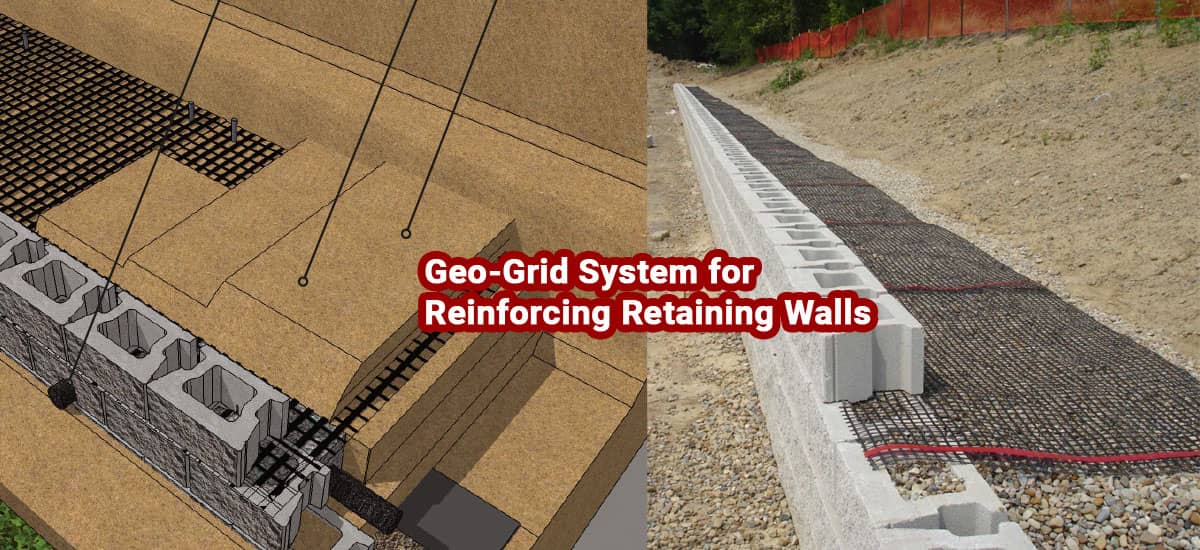The Geo-Grid System for Reinforcing Retaining Walls

Geo-grid fixes the Moxibustion walls of the stone. In case of differences in the blocks, a retaining wall will use. In lieu of cooling teams, a geo-grid fills the landfill for installation.
Benz must install the geo-grid blocks and reinforcement joints to install the other end. In order not to damage the walls, the distance between the blocks should be between 30 cm and 50 cm. As a result, the Benz should be cut. Most highway projects and real estate investment projects use retaining walls instead of concrete walls.
Define Geo-grid
A geo-grid is a flexible, synthetic mesh that designs specifically to stabilize slopes and retain soil. Geo-grids come in a variety of sizes, materials, and strengths. Typically, they come in rolls and are woven with polyester yarns or tensile strength plastics.
Function of Geo-grid
The Sandcastle Test involves placing cylinders of soil under vertical force. The soil first appears compressed into a cylinder. Similar to the first material, this second material contains mesh screens that simulate geo-grid reinforcements.
Define AB Grid & its use in Geo-grid
Calculate the size of the AB Grid and the number of layers you need for your retaining wall using the Soil Reinforcement. It is easy to roll out AB Grid along a wall and install it easily. Moreover, AB Grid is sturdy and strong in both directions. It is available in 3 feet and 4 feet rolls and is 50 feet long. It is better suitable for residential retaining walls under 6 feet tall.
Geo-grids that are cut to the design length are stronger when they are rolled in the roll direction. Such geo-grids are most effective for retaining walls at least six feet high.
Construction Process of Geo-grid
- Begin installing the AB Reinforcement Grid upon completion of the base course. The perimeter of the geo-grid is placed against the raised front lip of the retaining wall when you are using AB, AB Aztec, or the AB Europe Collection.
- Geo-grid edges should place in the middle of the facing unit when laying AB Fieldstone. When determining the size and location of these elements, you should always refer to your approved plans.
- You make sure that the seams of the next course of blocks are at least 1/4 the length from the seams of the blocks below.
- Check the alignment of the retaining wall line. After that, you can adjust blocks slightly to create straight lines or curves that flow smoothly.
- Remove any slack from the back of the geo-grid. It may need to be stake into place. Don't compact or drive directly on the geo-grid. Doing so will damage it.
Compaction & Backfilling
- Wall rock should install in the block cores and 300 mm behind each block. You may backfill behind the wall rock with infill or soil from the site to the height of the block.
- A plate compactor must compact the rock and soil behind the retaining wall. Start on the block and follow a path that runs parallel to the block, then compact in 200 mm or fewer lifts this time.
- Plate compactors should always use for two consecutive passes. The soil should remain solid and free of movement.
- Ensure that all blocks have all excess material removed from their tops. By doing this, the next course will place on a clean, smooth surface.
